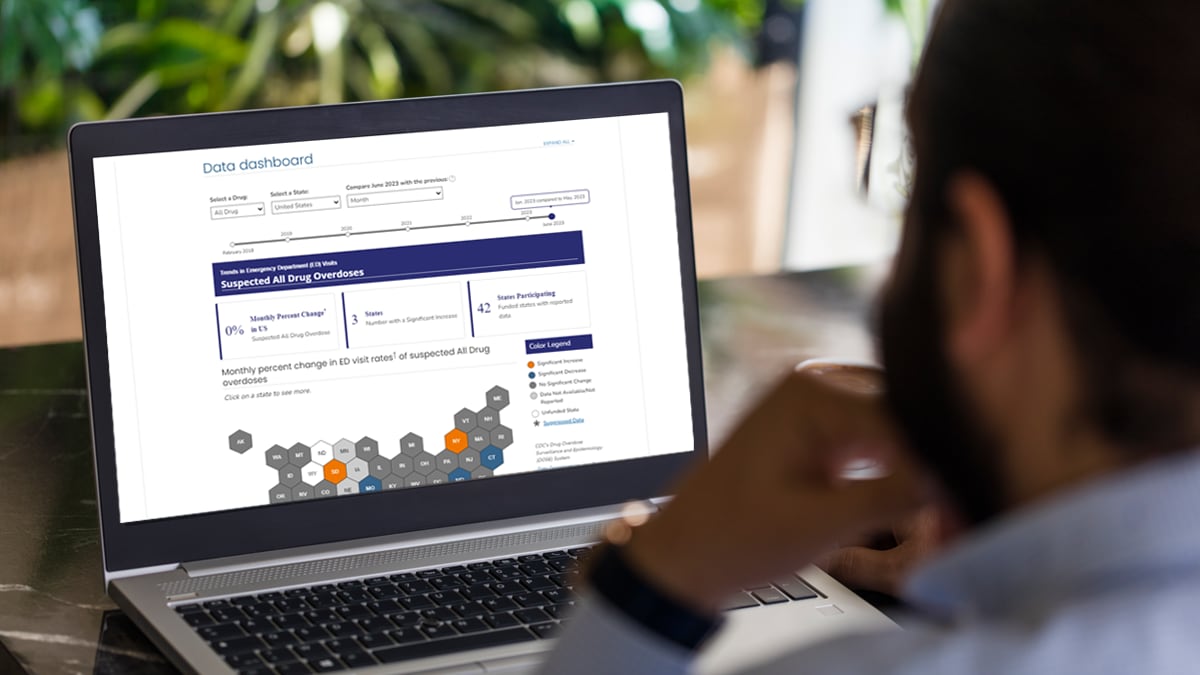What to know
- Fentanyl and its analogs (fentalogs) have increasingly contributed to opioid-involved overdoses across the United States.
- The Fentalog Study uses data collected to identify risk factors and evaluate optimal treatments for nonfatal overdoses involving fentanyl, novel fentalogs, and other substances.
- This dashboard provides estimates of substances detected in samples from patients experiencing a suspected opioid-involved overdose at a participating study site to alert providers about substance-related trends within the data.

About this dashboard
Fentanyl and its analogs (fentalogs) have increasingly contributed to opioid-involved overdoses across the United States. The Toxicology Investigators Consortium (ToxIC) and the Icahn School of Medicine at Mount Sinai are conducting a five-year project (2020-2025) examining fentalogs among nonfatal suspected opioid-involved overdoses, titled "Predicting Medical Consequences of Novel Fentanyl Analog Overdose Using the Toxicology Investigators Consortium (ToxIC)" (NIDA R01DA048009), referred to as "The Fentalog Study." CDC provides supplemental funding to increase the project's testing capacity.
The Fentalog Study uses data collected from ten geographically diverse hospitals in 9 states to identify risk factors and evaluate optimal treatments for nonfatal overdoses involving fentanyl, novel fentalogs, and other substances* and to alert providers about trends in data. Patients presenting with a suspected opioid-involved overdose in any of the ten study sites, with a leftover blood sample, are included for potential analysis. Approximately 30% of patients presenting with a suspected opioid-involved overdose in study sites have adequate leftover blood samples; samples are tested for a panel of 900+ substances,* by the Center for Forensic Science, Research, and Education (CFSRE).
Using data from The Fentalog Study, this dashboard provides estimates of substances detected in samples from patients experiencing a suspected opioid-involved overdose. The dashboard will be updated biannually or as new data become available. These data can be used in combination with nonfatal drug overdose data from the CDC's Drug Overdose Surveillance and Epidemiology (DOSE) system to improve understanding of drug use patterns in nonfatal overdoses.
Important data considerations
- Data are not geographically representative of the entire United States. The Fentalog Study only includes patients meeting case criteria in ten hospital sites across 9 states.
- Combinations of drugs found in the patient's blood may not be representative of the drug(s) they intended to take. Drugs may have been mixed together with or without the patient's awareness.
- The timing of when the patients took the drugs cannot be ascertained. Drugs found in combination may have been used at different times or may have been used together at the same time.
Suggested citation
Centers for Disease Control and Prevention. The Fentalog Study: A Subset of Nonfatal Suspected Opioid-Involved Overdoses with Toxicology Testing. Atlanta, GA: US Department of Health and Human Services, CDC; [INSERT YEAR, MONTH, DAY]. Access at: https://www.cdc.gov/overdose-prevention/data-research/facts-stats/fentalog-study-dashboard.html
